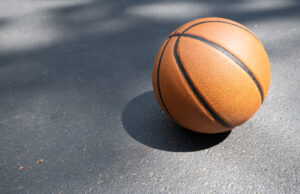Body types should not limit athletic opportunities
Kids have been living the “fat kid” stigma for decades. From getting picked last for recess kickball teams, to just giving up on exercising, being a heavy-set kid in athletic settings like PE classes is a challenge.
A study published in a health journal called Medscape shows how people that are bigger aren’t necessarily worse at any sports. The important thing is the body composition, not mass.
According to Medscape, “Age, sex, genetics and the requirements of the sport are factors that impact the individual athlete’s body composition. An optimal competitive body weight and relative body fatness should be determined when an athlete is healthy and performing at his or her best.”
In fact, dieting and weight cuts are often bad for the body, as it doesn’t get all the energy needed to partake in active sports.
Medscape reported, “With extreme energy restrictions, losses of both muscle and fat mass may adversely influence an athlete’s performance.”
With this said, students still believe that their weight or waistline means that they cannot be a good athlete. This can lead to feelings of discouragement, anger and frustration. All of these would be considered roadblocks that harm the achievement of the students more than the physical ability.
However, there is often no basis for this misconception. Megan Youngkent, physical education teacher at the high school, said, “I have students of all weight ranges that excel in my class. I feel that it is mostly a matter of will than body size. If a student works hard and tries their best, you’d be surprised how athletic they look. If a student is obese, it may be harder for them to move their body in a way they would like to for athletic success.”
Not only is it a matter of will, but good athletes each have one thing in common: good instructors.
Physical education teachers do lots around the gym to try to encourage students of all different shapes and sizes to participate and stay active.
Lauren Bauer, a physical education teacher at Holmes, tries to encourage students that working out can be fun, and to continue it into other aspects of their lives.
“I encourage all of my students to be physically active regardless of their shape and size because I want them to learn how to take care of their bodies along with learn how to live healthy, active lifestyles. I genuinely care about my students and want to provide them with the knowledge and tools necessary to be lifelong movers,” Bauer said.
Ethan Jennings, a physical educator at Peet, said that he tries to focus on integrating each student into a role in the PE class. “Every PE class has a wide range of ability levels. We do skill development many days depending on the activity. I will give different tasks for students based on their abilities. It is good for everyone to participate for peers of differing abilities. I will group kids on skill level when it comes to game play. Usually, I try and spread out the differing abilities. I hope that the more skilled students help develop the skills of their peers. When playing a game, it creates more competition if teams have an overall skill level that is similar,” Jennings said.
Regardless of weight, skill level and motivation, every student is encouraged to get up and get moving, whether you are in a PE class or sitting at home.









You must be logged in to post a comment Login